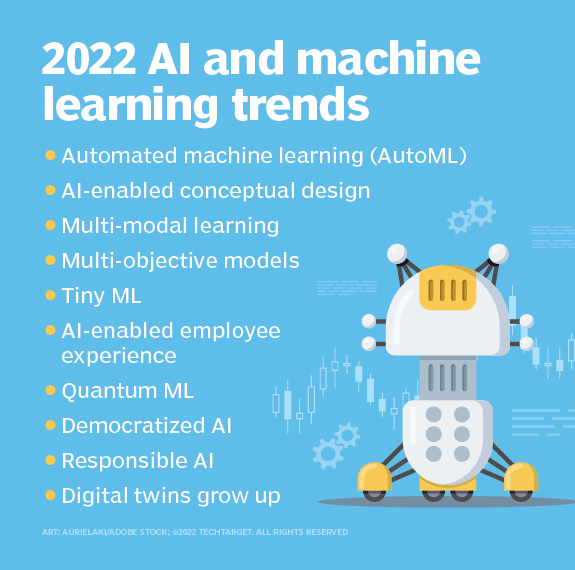
It ended with a sock puppet.
The year was 1999, and the dot-com era was in full swing. Every company was not just an Internet company, but an e-Commerce company, and venture capitalists and software developers alike retired to their bed chambers at night thinking about how, in the next morning, or maybe the one after that, they’d all be vested gazillionaires.
I had, I admit, taken a somewhat contrarian view myself, though I wasn’t alone. I’d have conversations at conferences over a beer or coffee, and every so often the conversation would come around to something like this.
“You know, this isn’t sustainable,” my friend would say.
“Yeah, I know,” I would reply.
“There’s too much money chasing around too few ideas, and it feels like the bottom’s about to fall out any day now.”
“Uh, huh,” I’d reply sagely, though I felt it too.
“It seems like a good idea to start floating resumes, maybe getting into something safer, like professional skydiving.”
The stock for pets.com and their inane sock puppet just kept climbing into the stratosphere, until one day, it didn’t. The dot-com crash hit a lot of companies hard. People in San Francisco that had just put up their stock options collateral up for million-dollar McMansions would end up sleeping under bridges a year or two later. While the dot-com bust didn’t really impact most of the economy much at all, the tech sector managed to shrink by about 10% over the course of the next four years, and many people who had been high flying in that sector leading up to the crash would leave it altogether.
Technology is a weird field to be in. The hardcore people who are drawn in by the challenges of trying to solve problems often do so in relative anonymity, scratching itches that seem to be a specialty of the deeply introverted. They are, for the most part, ignored by the rest of society until they do something that has some real practical utility, at which point investors looking for the next big thing begin to perk up.
At the same time, the sector has its own marketing mills that try to identify trends, label them, then do everything they can to get in front of them. Web 2.0, mobile computing, big data, cloud computing, data science, machine learning, edge computing, artificial intelligence, decentralized finance, web 3.0, the metaverse . . . each of these went from novel ideas to marketing campaigns. In the process, what little meaning they may have originally had largely disappeared so that they simply became the equivalent of named storms wreaking havoc on the IT landscape before fading away.
In some cases, what was left was truly transformative – there have been some very interesting things happening in the machine learning and deep learning spaces, advances that have changed our whole relationship to data. Other such labeled trends started out with great promises: “Self-driving cars!”, “Everyone can be a bank!”, “an end to code”, “plug-and-play analytics”, and many more, that either failed to materialize or were stymied when people started asking very good questions such as “In the event of an accident, who is responsible?” Technologists would shake their heads and mutter “but the technology is so cool”, not realizing that the technology was not really the problem, it was the fact that, at the end of the day, when things go wrong, someone should be liable.
Put another way, no one really thought about the deeper question of “Do we want or even need our cars to be self-driving?”
Now, I personally like the idea of getting into my car, telling it my destination, then taking a nap while my car does the hard work of getting there, but then again, I like taking naps. At one point I even thought it might spell the end of car ownership, but I don’t think so now. We like augmenting our abilities, but we, individually, have a healthy mistrust of giving up control in life or death situations, especially to something that isn’t actually aware. There are also broader social issues, not to mention several technical ones that we still haven’t really ironed out yet. Meanwhile, we get incrementally closer, and no doubt this is a tech that will be revisited.
But there’s another kind of tech that exists primarily for the purpose of enrichment – technology in search of a pot of money if you will. Every cycle seems to engender something like this. In 2022, you can argue that decentralized finance, non-fungible tokens, and the metaverse all fall squarely in this camp. DeFi is the latest incarnation of the first, and the implied call to action (i.e., Defy!) likely is not lost on the reader.
With blockchain, we can create eCoins that use an arbitrary set of functions to create “scarcity” in the virtual world. The problem with the virtual world is that copying representations of things is something that is built into it at a deep, perhaps even axiomatic level, and scarcity for the most part is only limited by the size of the temporary or persistent memory store. The physical world, on the other, lacks that capability, at least for ordinary matter. The world that you and I inhabit is made of fermions, the virtual world is essentially bosonic. A physicist would say that they have different mechanics, which is a fancy word meaning that they obey different rules.
Bitcoin, Ethereum, and their ilk “work” by trying to make bosons act like fermions, which requires a fair amount of energy consumed in the physical universe with at best questionable results, and then by using the resulting tokens as a proxy for currency. Governments exist in great part by their ability to ensure that only they have the ability to legitimately create tokens that can be exchanged for goods and services in a given region. When they find that someone has set up shop to print twenty dollar bills, they send over very large, serious-looking people in ill-fitting suits to have a talk.
As it turns out, currency itself is somewhat virtual, which is why the Secret Service exists in the United States, and why it was once part of the Treasury Department. The whole protecting senior government officials role was a side gig for the Secret Service, which existed initially for tracking down currency forgeries. In 2003, George W Bush moved the Secret Service to Homeland Security, though they still prosecute counterfeiting. Government is weird sometimes.
I’ve talked with several futurists over the last few years about blockchain, and almost all of them feel the same way: decentralized finance is a great theory if you believe that governments are corrupt and will collapse under their own weight soon, but absent that, they are as substantial as tulip futures. The futurists that don’t are the ones that see these currencies as becoming in effect black-market currencies run by criminal cartels intent on evading oversight and taxes. The more Libertarian leading futurists (and the profession tends to run in that direction) also believe that transnational corporations, as well as religious organizations, would love to become the holders of blockchains that ultimately will end up allowing them to fulfill many of the same niches as governments do without the need to ensure the well-being of their citizenry.
If that is the case for eCurrencies, then it is especially the case for Non-Fungible-Tokens. In this particular case, it again took what had been a worthwhile use case (tracking the provenance of artwork, which is something that has a great deal of value) and turning it on its head by, in essence, selling a pointer to a resource, sometimes for an insane amount of money. This is the sock puppet of the 2020s, and it is very likely that the NFT market will collapse before it even really takes off.
Finally, on the list of selling Brooklyn Bridge several times, we get to the Metaverse. Regular contributor Stephanie Glen writes an article this week (The Metaverse May Never Arrive and Here’s Why) that covers this in-depth, but again, it comes down to technology being developed in search of profits, rather than to solve a problem. There are actually a number of things that fall under the rubric of useful metaverse technologies, from augmented reality and gaming and media entertainment to the Internet of Things and the orchestration of drone actions that all fall within this space, but the preoccupation with using the metaverse as yet another vehicle to wrest money from a captive audience will actually more likely impede the development of its real value as a global integration platform for data of all sorts.
It’s worth noting that the years following the dot-com crash turned out to be some of the most significant in computer history, as, during that period, people worked together to develop common standards after having spent the previous decade trying to strike it rich. There may be room for distributed, decentralized currencies, for legally recognized decentralized identifiers being used for determining ownership, and for shared social, technological, governmental, and economic platforms, but these will only come by not letting greed overrule our need for consensus.
In media res,
Kurt Cagle
Community Editor,
Data Science Central
To subscribe to the DSC Newsletter, go to Data Science Central and become a member today. It’s free!
Data Science Central Editorial Calendar
DSC is looking for editorial content specifically in these areas for February, with these topics having higher priority than other incoming articles.
- AI-Enabled Hardware
- Knowledge Graphs
- Metaverse
- Javascript and AI
- GANs and Simulations
- ML in Weather Forecasting
- UI, UX and AI
- GNNs and LNNs
- Digital Twins
DSC Featured Articles
- Why Data Management is Today’s Most Important Business Discipline Bill Schmarzo on 08 Feb 2022
- Job trends in the tech world for 2022 EdwardNick on 08 Feb 2022
- Softphone Technology in the pandemic times Aileen Scott on 07 Feb 2022
- How ETL Validation Scripts Automation Improves Data Validation Sameer Narkhede on 07 Feb 2022
- How to write SQL queries for azure functions Karen Anthony on 07 Feb 2022
- The Metaverse May Never Arrive, And Here’s Why Stephanie Glen on 07 Feb 2022
- How to create an AI framework based on ethical values ajitjaokar on 07 Feb 2022
- Evolution of IT Service Desk Operations Vinaksh Belyer on 05 Feb 2022
- Steps to Bridge AI Talent Shortage Aileen Scott on 04 Feb 2022
- Javascript Tips For Conditional Expressions Kurt Cagle on 04 Feb 2022
- DSC Weekly Newsletter 01 Feb 2022: What is Web 3.0 and Why Does it Matter? Kurt Cagle on 04 Feb 2022
- Data Animation: Much Easier than you Think! Vincent Granville on 04 Feb 2022
- Natural Interfaces Fuel Expansion of Mixed Reality Market PragatiPa on 04 Feb 2022
- Applications of Artificial Intelligence in Human Resource Management Aileen Scott on 04 Feb 2022
- Cyber Security as a Service: Vital Growth-Multiplying Trends of 2022 Nikita Godse on 04 Feb 2022
- How to Build a Product Development Roadmap? James Wilson on 04 Feb 2022
- Learn how Digital Transformation has Impacted Accounting Aileen Scott on 04 Feb 2022
- How Augmented Reality Can Boost Social Media Videos Costanza Tagliaferi on 04 Feb 2022
- What Factors Will Weave a Strong Web of Growth for the Delta Robotics Market? Nikita Godse on 03 Feb 2022
- Agent IRIS* Sergey Lukyanchikov on 01 Feb 2022
Picture of the Week


